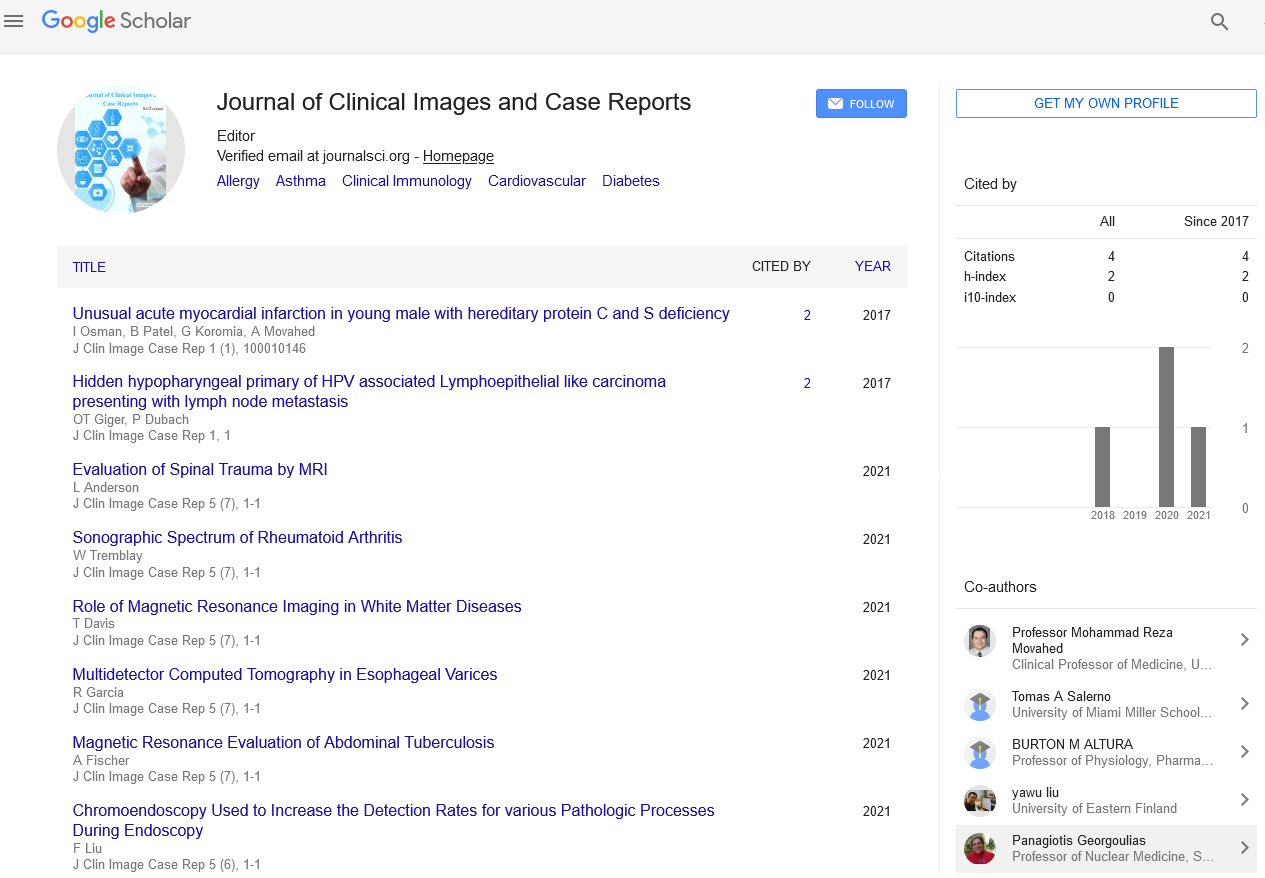Commentary, J Clin Image Case Rep Vol: 8 Issue: 6
Early Detection and Diagnosis of Systemic Inflammatory Response Syndrome
Neibart Lerakis*
1Department of Histology, Pomeranian Medical University in Szczecin, Szczecin, Poland
*Corresponding Author: Neibart Lerakis,
Department of Histology, Pomeranian
Medical University in Szczecin, Szczecin, Poland
E-mail: lerakisneibart@gmail.com
Received date: 26 November, 2024, Manuscript No. CICR-24-156421;
Editor assigned date: 28 November, 2024, PreQC No. CICR-24-156421 (PQ);
Reviewed date: 12 December, 2024, QC No. CICR-24-156421;
Revised date: 19 December, 2024, Manuscript No. CICR-24-156421 (R);
Published date: 26 December, 2024, DOI: 10.4172/CICR.1000339.
Citation: Lerakis N (2024) Early Detection and Diagnosis of Systemic Inflammatory Response Syndrome. J Clin Image Case Rep 8:6.
Description
Systemic Inflammatory Response Syndrome (SIRS) is a clinical condition characterized by an intense inflammatory response throughout the body. It is typically triggered by infections, trauma, burns, or other severe injuries and can lead to multiple organ failure if left untreated. The early detection and diagnosis of SIRS are important to prevent progression to more severe conditions like sepsis or septic shock, which carry high morbidity and mortality rates. Understanding the signs, symptoms, and diagnostic criteria for SIRS is essential for healthcare providers to initiate timely interventions and improve patient outcomes.
SIRS is defined by the presence of two or more of the following symptoms: A body temperature above 38°C or below 36°C, an increased heart rate (tachycardia) of more than 90 beats per minute, a rapid respiratory rate (tachypnea) greater than 20 breaths per minute, and an abnormal white blood cell count (either greater than 12,000 cells/mm³ or less than 4,000 cells/mm³). These physiological responses reflect the body’s attempt to cope with a severe inflammatory insult.
The early stages of SIRS can be subtle, with patients presenting with general symptoms such as fever, chills, increased heart rate, and altered mental status. As the syndrome progresses, organ dysfunction can occur, affecting the kidneys, lungs, liver, and cardiovascular system. For example, the kidneys may show signs of acute kidney injury, while the lungs may develop Acute Respiratory Distress Syndrome (ARDS). Identifying these complications early is important for preventing long-term damage and improving survival chances.
A thorough medical history is essential for diagnosing SIRS, as it helps identify potential causes such as infections, trauma, or surgeries. Laboratory tests, including blood cultures, lactate levels, and organ function tests (such as liver enzymes and kidney function markers), are used to assess the severity of the inflammatory response and identify underlying causes. Imaging studies may also be performed to detect any hidden infections or injuries that could be contributing to the inflammatory response.
Early detection of SIRS requires a high index of suspicion, especially in patients who have risk factors such as recent surgery, trauma, or a known infection. Healthcare providers must monitor vital signs closely, paying particular attention to changes in heart rate, temperature, and respiratory rate. The use of scoring systems like the SIRS score or the Sequential Organ Failure Assessment (SOFA) score can help clinicians assess the severity of the condition and guide treatment decisions. Once diagnosed, the primary goal of treatment is to address the underlying cause of the inflammatory response. If an infection is identified, appropriate antibiotics or antifungal therapy should be initiated promptly. Supportive care, such as fluid resuscitation, oxygen therapy and vasopressors, may be required to stabilize the patient’s condition. In severe cases, organ support, including mechanical ventilation or dialysis, may be necessary.
Prevention and early intervention are key to improving the prognosis of SIRS patients. Prompt identification and management can help prevent the development of sepsis, which is a life-threatening complication of SIRS. Educating healthcare providers and the public about the early signs of SIRS and the importance of seeking medical attention quickly can significantly improve outcomes. Early detection and diagnosis of Systemic Inflammatory Response Syndrome are crucial in managing this potentially life-threatening condition. By recognizing the clinical signs, using diagnostic tests, and providing timely interventions, healthcare providers can reduce the risk of progression to sepsis and improve patient survival. Understanding the pathophysiology of SIRS and the appropriate treatment strategies is essential for optimizing care and preventing complications.
 Spanish
Spanish  Chinese
Chinese  Russian
Russian  German
German  French
French  Japanese
Japanese  Portuguese
Portuguese  Hindi
Hindi 